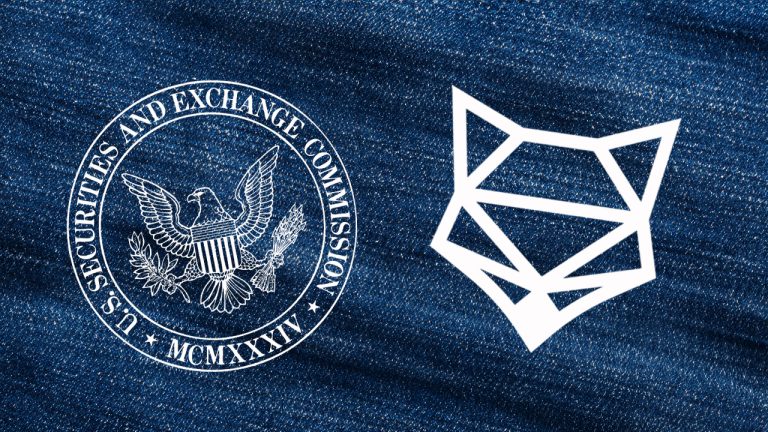 Cryptocurrency entrepreneur Erik Voorhees has publicly criticized Revolut, claiming the fintech company shut down his account due to his interactions with cryptocurrencies. Despite not using Revolut’s crypto service and funding his account via fiat from an exchange, Voorhees experienced a freeze on his account for three weeks, followed by termination. This incident occurred even after […]
Cryptocurrency entrepreneur Erik Voorhees has publicly criticized Revolut, claiming the fintech company shut down his account due to his interactions with cryptocurrencies. Despite not using Revolut’s crypto service and funding his account via fiat from an exchange, Voorhees experienced a freeze on his account for three weeks, followed by termination. This incident occurred even after […] The U.S. Securities and Exchange Commission (SEC) has leveled charges against Shapeshift AG, accusing the company of operating without proper registration. This case has ignited a broader conversation on the regulatory framework for crypto assets, with SEC Commissioners Hester Peirce and Mark Uyeda voicing their dissent and concerns about the SEC’s current approach toward crypto […]
The U.S. Securities and Exchange Commission (SEC) has leveled charges against Shapeshift AG, accusing the company of operating without proper registration. This case has ignited a broader conversation on the regulatory framework for crypto assets, with SEC Commissioners Hester Peirce and Mark Uyeda voicing their dissent and concerns about the SEC’s current approach toward crypto […] Silicon Valley Bank (SVB) has become the center of attention after its collapse prompted the U.S. Federal Deposit Insurance Corporation (FDIC) to shut the bank down on Friday. It was the largest U.S. bank failure since 2008, and various alleged catalysts have been pointed to. Some believe venture capitalists caused a bank run, while others […]
Silicon Valley Bank (SVB) has become the center of attention after its collapse prompted the U.S. Federal Deposit Insurance Corporation (FDIC) to shut the bank down on Friday. It was the largest U.S. bank failure since 2008, and various alleged catalysts have been pointed to. Some believe venture capitalists caused a bank run, while others […]
ShapeShift CEO Erik Voorhees expects Bitcoin to reach $40,000 by the summer, while Tim Draper has stood by his $250,000 prediction for the second year running.
There is little agreement among Bitcoin’s commentators over the last few weeks, with crypto execs, research analysts and billionaire investors offering wildly different takes on what's in store for Bitcoin for the year ahead.
One crypto exchange founder expects Bitcoin (BTC) to spike to $40,000 by the summer, while a Bitcoin billionaire has renewed his bullish $250,000 BTC price prediction for the year.
Erik Voorhees, founder and CEO of cryptocurrency exchange ShapeShift, was optimistic about a potential recovery of Bitcoin’s price during an interview with Bankless on Jan. 2, stating he “wouldn’t be surprised” if Bitcoin (BTC) hit “like $40K” by the “summer.”
Voorhees noted that if his prediction were to come true that would be “2.5X” from its current price of $16,666, which he said is a “great return.”
The crypto executive couldn’t pinpoint the timing of the next bull run, only saying it would come sometime within the next “six months to three years.”
He shut down the idea that it could take as much as “10 years,” however, arguing that if that happened it would mean the whole “thing [...] probably failed.”
Looking ahead, Voorhees said that the macro environment, interest rates and the tightening of monetary conditions are big factors in how the crypto market will play out this year.
He also acknowledged that the reputation of crypto from outsiders is “just trash” but those commentators will also be the ones to be “blindsided” when the next rally happens.
Voorhees said that whether we are in a bull or bear market, we are “in the middle of a revolution right now.”
Meanwhile, Bitcoin billionaire investor Tim Draper has continued to knuckle down on his $250,000 Bitcoin prediction via his most recent Twitter post on Jan. 1, showing he even has it printed on a T-shirt.
See t-shirt. $250k by 2022. My prediction was off by a bit. Hasn’t made it there…yet. Certainly before the halvening. #truebelievers #bitcoin #worldoftrust #freedom #hodl pic.twitter.com/jMLi8rraj8
— Tim Draper (@TimDraper) December 31, 2022
Draper first made the bold $250,000 Bitcoin price prediction during a speech at his own Draper University in San Mateo in April 2018.
At the time, he said he was looking into what he described as a “crystal ball,” saying he was “thinking” of $250,000 for a Bitcoin by 2022.
Draped said people would perceive those that believe in the prediction as “crazy,” but reassured his audience it would happen and be “awesome.”
In his most recent tweet, Draper conceded that his “$250K by 2022” prediction was “off by a bit” but said he believes it “certainly” will happen before the Bitcoin halving, which is set for April 2024 according to Coinmarketcap.
His bullish prediction was however met with varied comments on Twitter, with one user tweeting that they had “lost interest” in the price of Bitcoin since Celsius stole the “one Bitcoin” they had, another tweeted “you have high hopes,” while another predicted that it is “unlikely” to even go “above $30K in 2023.”
Draper’s comments could be seen as particularly bullish even among Bitcoin supporters.
In September, Bloomberg Intelligence Senior Commodity Strategist Mike McGlone — who has been optimistic about the future of Bitcoin in the past — tapped the crypto to only reach $100,000 by 2025.
He's made that prediction once before, during an interview in October 2020 where he said Bitcoin is “on track” to hit “$100,000 by 2025.” A year later, he stood by that prediction in an interview with Kitco News, saying it’s only a “matter of time” to get to “$100,000.”
He saidthe reason for this is that supply is still “going down,” while adoption and demand are “still increasing.”
In December, United Kingdom-based banking firm Standard Chartered predicted Bitcoin could drop to as low as $5,000 in 2023 as one of the possible "financial-market surprises" of the year.
According to a Dec. 5 report from CNBC, rising yields and a plunge in tech stocks could lead to an acceleration of a Bitcoin sell-off, causing further bankruptcies and collapses in crypto and a collapse in investor confidence in digital assets.
However, the author of the investor note, Eric Robertsen — the firm's global head of research — noted that this was an extreme prediction that fell outside its own baseline views and outside of market consensus.
Related: Bitcoin Jack: "I try to think more about when than where" for price
While some crypto industry figures have been confident enough to share their Bitcoin forecasts for the years ahead, others have been more reserved in sharing their thoughts on the subject.
Co-founder and managing partner of digital asset management platform Nexo, Antoni Trenchev, recently explained to Cointelegraph that there are “many factors” that can influence the price of Bitcoin.
Alex McCurry, CEO and co-founder of blockchain solution provider Solidify.io, told Cointelegraph on Jan. 3 that “Bitcoin is a completely unpredictable asset.”
The uthor of the best-selling book Rich Dad, Poor Dad, Robert Kiyosaki, hasn't made any price predictions in recent months either, despite frequently posting about Bitcoin on his Twitter page.
In December, Kiyosaki said he was investing in Bitcoin and is "very excited" about it due to it being classified as a commodity much like gold, silver and oil, unlike other crypto tokens which he said have been classified as securities.
Q: Are you investing in Bitcoin?
— Robert Kiyosaki (@theRealKiyosaki) December 31, 2022
A: Yes I am. I am very excited about Bitcoin. Why? Because Bitcoin is classified as a commodity much like gold, silver, and oil. Most crypto tokens are classifed as a security and SEC regulations will crush most of them. I am buying more BC

The organization transitioned to a DAO in July 2021 as part of a broader pledge to decentralize its operations.
ShapeShift, a noncustodial crypto exchange and decentralized autonomous organization (DAO), has taken additional steps toward complete decentralization by migrating users to a new open-source application — a move the organization said would enhance user mobility.
The organization announced that as of Oct. 19, all native web users of the ShapeShift platform have migrated to a decentralized version of the application. The announcement also coincided with the release of a new mobile app that the organization said would provide an “authentic DeFi universe” experience. The new mobile app is said to provide users with additional flexibility, mobility and features when connecting their wallets and trading crypto.
Willy Orgorzaly, who heads decentralization for the Fox Foundation — which oversees the ShapeShift DAO — said the mobile app is “fully open source” and that “the only backend is blockchain data,” which is also in the process of being decentralized.
As part of its decentralization efforts, ShapeShift has expanded user options for investing and managing digital assets. It has also pledged to permanently erase users’ data once the company’s centralized infrastructure is fully wound down.
Self-custody.
— Erik Voorhees (@ErikVoorhees) June 16, 2021
Decentralization.
Immutability.
Each requires the former.
This is the way.
As reported by Cointelegraph, ShapeShift announced its plans to decentralize its entire operations in July 2021. The decentralization pledge also included a massive airdrop of FOX tokens, the native asset of the ShapeShift platform, to over 1 million users. In the following months, the organization issued multiple airdrops and fully open-sourced its v2 platform code.
Related: Tech’s good intentions and why Satoshi’s new ‘social order’ foundered
While decentralization has been at the heart of the Bitcoin (BTC) revolution, the crypto industry does not uniformly accept the concept or apply it effectively. New efforts to promote decentralization have emerged within Web3, a broad concept that refers to some future iteration of the internet.
 The founder and CEO of the leading exchange FTX, Sam Bankman-Fried has offered to give early liquidity to Voyager Digital’s customers, according to an announcement FTX published on July 22. Furthermore, Bankman-Fried discussed the crypto industry with CNBC in an exclusive interview, and noted that he was willing to deploy “hundreds of millions beyond what […]
The founder and CEO of the leading exchange FTX, Sam Bankman-Fried has offered to give early liquidity to Voyager Digital’s customers, according to an announcement FTX published on July 22. Furthermore, Bankman-Fried discussed the crypto industry with CNBC in an exclusive interview, and noted that he was willing to deploy “hundreds of millions beyond what […]
The entity will be dissolved upon the completion of ShapeShift’s decentralization process.
On Wednesday, ShapeShift — a Swiss decentralized autonomous organization (DAO) hosting a cryptocurrency trading ecosystem — announced that its centralized corporate brand, ShapeShift AG, has formed the FOX Foundation. The nonprofit organization's stated purpose is to oversee the decentralization of its namesake trading platform and assets.
The FOX Foundation’s charter includes handling tasks such as paying bills in fiat currency, hosting servers, maintaining the platform’s centralized infrastructure until the transition completes, and replacing ShapeShift’s backend node with decentralized infrastructure FOXChain, developed in conjunction with Coinbase Cloud.
According to the company, ShapeShift became the first in the space to fully decentralize its corporate structure and open its source code when it did so in July 2021. Because the move was somewhat unprecedented, the establishment of the FOX Foundation serves as a solution to ensure the neutrality of the ecosystem. FOX Foundation is neither led by ShapeShift AG nor ShapeShift DAO and has the singular charter of decentralizing the platform’s assets as efficiently as possible. Once the task is complete, the foundation will dissolve and distribute the remaining funds to the ShapeShift DAO Treasury.
Regarding the development, Willy Ogorzaly, head of decentralization for the FOX Foundation, said:
“While the necessary tooling and infrastructure are maturing rapidly, it will take time for the DAO to achieve its final, fully autonomous form. The FOX Foundation exists as a stepping stone in this journey, fulfilling the centralized legacy’s responsibilities while supporting the DAO in implementing sustainable, decentralized alternatives.”
ShapeShift is unique among cryptocurrency trading platforms in that it neither collects users’ funds into company accounts, requires registration nor gathers any of its users’ personal data. The company keeps customers’ assets only in case of a failed exchange. The exchange only operates with cryptocurrencies, meaning only coin-to-coin swaps are possible.

Nonfungible tokens have emerged as one of the most popular use cases of blockchain technology, generating billions of dollars in revenue through 2021.
Non-custodial cryptocurrency platform ShapeShift DAO has launched a new nonfungible token (NFT) auction in support of female artists in the nonfungible token and blockchain industries — a segment of the population that remains underrepresented in the rapidly growing digital economy.
The auction for “Block 495559—Crypto Kitties and the Great Hairball in the Tubes,” a collaborative one-of-a-kind NFT series created by female artist LunaHawk and ShapeShift DAO director GrayMachine, will be held on OpenSea between April 4–11. The NFT series was minted on the Ethereum mainnet and will include custom, animal-themed digital art that conveys the history of the cryptocurrency market through various animals.
ShapeShift DAO members approved of LunaHawk’s 10-piece NFT series in October 2021. The collection was first displayed at the ETHDenver conference in February.
According to GrayMachine, the NFT auction will be a first of a series that will launch in the “coming weeks and months.”

ShapeShift DAO plans to contribute 10% of the NFT proceeds to the Women of Crypto Art Fund, a community group that supports women in the digital art space. The contributions will be made via Giveth, a crypto-focused charitable funding platform.
Related: International Women’s Day 2022 focuses on bringing women to Web3
In addition to promoting women in blockchain, ShapeShift DAO said the auction will also support the needs of the decentralized autonomous organization as it continues to grow.
Now that we're open source, anyone is welcome and encouraged to add new features to https://t.co/RtsJBsfELo
— Erik Voorhees (@ErikVoorhees) March 25, 2022
ShapeShift DAO’s Product and Engineering workstreams will provide guidance and support.
How to get started...https://t.co/3pJM8nvIYu@ShapeShift_io #DAO
As Cointelegraph reported, ShapeShift began to decentralize its entire organization in July 2021 in an unprecedented move that included the largest airdrop in history and full open-sourcing of its platform code. The ShapeShift DAO Governance Treasury, as well as the company’s employees and shareholders, were given a three-year vesting schedule beginning June 2, 2021.
The market for NFTs, meanwhile, has slowed considerably from its torrid growth pace in 2021. By early March, monthly NFT buyers had dipped below 800,000 for the first time since October as search volumes for digital collectibles also declined sharply. Despite the pullback, NFT adoption appears to be on an upward trajectory amid broader global awareness.

According to the exchange, it plans to retain 16 cards from the blockchain-based game Spells of Genesis to sell before 2022 and give the remaining 16 to its DAO.
Non-custodial cryptocurrency exchange ShapeShift has burned hundreds of themed collectable “cards” from the blockchain-based mobile game, Spells of Genesis. The team said that the remaining cards in its possession will be placed under the control of its new DAO, and unlocked in limited tranches over the coming two years.
According to on-chain data, ShapeShift has burned at least 817 of the digital cards titled “ShapeShift the Wanderer”. This follows an Oct. 12 announcement that the exchange intended to burn the majority of cards to make those in circulation “among the most rare [Spells of Genesis] cards in existence and among the oldest NFTs in existence.”
“These are some of the earliest NFTs (circa 2015) that were minted by Spells of Genesis and given to ShapeShift as part of our partnership supporting their early blockchain-based game development,” said ShapeShift. “These could end up being some of the rarest and most historical NFTs ever.”
In total, there are now only 183 editions of the asset, known on-chain as SHAPESHIFTCD, out in the wild. Many of these are believed to be lost, potentially making them one of the rarest Blockchain collectibles in existence.
According to the exchange, it plans to move the 32 remaining cards in its possession from the Counterparty (XCP) blockchain to the Ethereum blockchain using the Emblem Vault bridge, which allows crypto users to wrap Counterparty tokens as ERC-721 assets and trade them on Ethereum via platforms such as OpenSea.
Of the total not burned, ShapeShift will retain 16 cards to sell before 2022 and give 16 to its decentralized autonomous organization, or DAO, treasury. ShapeShift said it will unlock the cards in stages over the next two years, but FOX token holders will vote on whether the DAO sells or HODLs.
“Whether the DAO sells these NFTs for ETH, holds them for the long term, or some combination thereof they will become a valuable and important asset in the ShapeShift DAO treasury,” said the exchange. “There is some chance the NFTs do not end up being valuable and become a non-useful asset, but even in that case no harm is done to the DAO.”
Related: Tales from 2050: A look into a world built on NFTs
The move seems to be an attempt to drive additional interest and gain more value from the crypto collectible cards, which predate CryptoPunks and all other major NFT offerings to come out of the recent boom. According to Shaban Shaame, blockchain pioneer and CEO of software company EverdreamSoft, Spells of Genesis cards are “not particularly easy to acquire” given their location on the XCP blockchain. However, the Emblem Vault bridge has provided users with a way to trade the tokens on Ethereum, leading to a new boom in trading activity for the once all-but-forgotten assets.

In a July interview with Cointelegraph, CEO Erik Voorhees described full decentralization as an “iterative process” that can take many years.
Non-custodial cryptocurrency exchange ShapeShift has completed its second airdrop of FOX tokens — dubbed “fairdrop” — as part of a broad decentralization pledge that was first announced in July.
The airdrop of 6,613,000 FOX tokens was distributed to over 33,000 DAO community members, ShapeShift announced Tuesday. These holders were previously ineligible for the airdrop reward because their tokens were locked in staking or liquidity operations.
A proposal to amend the token distribution process to include DAO community members was submitted on Sept. 16, receiving overwhelming support.
As Cointelegraph reported, ShapeShift airdropped 340 million FOX tokens to over one million users in July after the company announced it was dissolving its corporate structure — an industry first — as part of a broad commitment to decentralization.
In a follow-up interview with Cointelegraph, CEO Erik Voorhees described decentralization as an “iterative process,” given that some parts of an organization are easier to open source than others. As part of this process, ShapeShift has established a foundation to oversee the shift to decentralization. This foundation, said Voorhees, will become less relevant as the open-sourcing process expands in the coming years. By that time, ShapeShift will be better described as an open-source, multi-chain self-custodied cryptocurrency platform for all users.
Related: Decentralized search engine becomes default option on European Android devices
The modern premise of decentralization was made famous by Satoshi Nakamoto, Bitcoin’s (BTC) pseudonymous creator, who ushered the blockchain revolution in a 2008 whitepaper that explained the merits of a peer-to-peer electronic cash system. Many blockchain projects that have since emerged have promised decentralization, though in practice their operations have been closer to “shadow-centralization.”
Recently, Securities and Exchange Commissioner Hester Peirce warned that DeFi projects that have not embraced full decentralization risk running afoul of federal regulations. In an August interview with The Defiant, Peirce said:
“If you want to be decentralized, you really need to be decentralized, and that is going to then put you in a different category from the perspective of regulators because that’s just not something that we’ve dealt with before.”